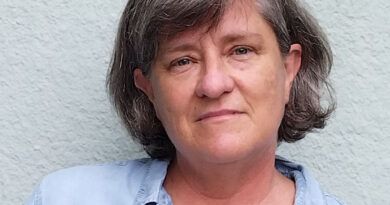Building Institutions to Aid Creatives in Publishing
Publishing creatives—writers, editors, illustrators, and designers—are the backbone of the industry. They create stories that inspire, inform, and challenge societies. Yet, in Africa, many of these creatives work in isolation, facing challenges ranging from limited funding to inadequate training and poor access to local and global markets. Institutions designed to support these creatives can bridge these gaps, creating a thriving ecosystem.
Existing Institutions and Their Impact
Africa is not devoid of institutions supporting publishing creatives. Organisations like the Writers Project of Ghana (WPG) and Nigeria’s Association of Nigerian Authors (ANA) have made commendable strides in offering platforms for writers to share their work and access mentorship. These institutions often organise workshops, prizes, and residencies to enhance the skills and visibility of creatives. For example, ANA’s annual literary prize has highlighted the talents of emerging Nigerian writers, providing recognition and encouragement.
Additionally, partnerships with global institutions, like Chimamanda Ngozi Adichie’s collaboration with Narrative Landscape Press and the CANEX Book Factory initiative, have spotlighted the potential of African creatives in the global market. The CANEX Book Factory supports African publishers by offering funding, editorial guidance, and opportunities to showcase their works at international fairs like the Frankfurt Book Fair. These programs provide valuable resources like editorial services, distribution networks, and funding opportunities, helping creatives gain a foothold in competitive markets.
However, these institutions often face limitations in reach, sustainability, and the ability to address all the needs of creatives across the continent. The scope of such programs is frequently limited to major urban centres, excluding creatives in remote or underserved areas.
Identifying the Gaps
While these institutions play vital roles, many publishing creatives are still excluded from their benefits due to geographical, financial, and systemic barriers. Workshops and residencies often take place in major cities, leaving rural creatives without access. A talented writer in Kisangani, Democratic Republic of Congo, might struggle to find opportunities compared to someone in Nairobi.
Funding remains a persistent issue, with many institutions relying on sporadic grants rather than sustainable financial models. This instability limits the scale and continuity of their programs, leaving many promising initiatives short-lived.
Additionally, the lack of robust distribution networks means many African creatives struggle to get their works into the hands of readers. Without proper marketing and distribution channels, even the most talented writers face obscurity. This is especially true for African books attempting to break into global markets, where logistical challenges and a lack of representation further compound the problem.
Furthermore, there is an absence of institutions offering holistic support—integrating training, funding, mentorship, and market access under one umbrella. Many creatives lack the business acumen to navigate contracts, royalties, and marketing, leaving them vulnerable to exploitation.
Proposed Solutions for the Publishing Industry
1. **Regional Hubs:** Establishing regional hubs can cater to creatives in underserved areas by offering training, access to technology, and co-working spaces for collaboration and learning. These hubs could house libraries, internet-enabled workspaces, and studios for creatives to refine their craft. For instance, creating hubs in cities like Enugu, Kano, and Ibadan would make opportunities more accessible to writers across Nigeria, rather than concentrating them solely in Lagos. Similarly, in East Africa, hubs in cities like Arusha or Kisumu could decentralise access to resources, enabling creatives in these regions to thrive.
2. **Digital Platforms:** Investing in digital platforms that connect creatives with publishers, agents, and readers globally could democratise access to resources and reduce geographical barriers. A platform similar to Submittable but tailored for African creatives could allow writers to submit manuscripts, find agents, and access publishing opportunities. Additionally, features like online workshops, virtual residencies, and crowdfunding tools could provide vital support. For example, Masterclass Writing Classes have demonstrated how digital platforms can break down barriers to access.
3. **Distribution Networks:** African books need to reach Africa and the world. Strengthening distribution networks by partnering with logistics companies and online marketplaces could be the solution. This would ensure that books reach audiences both within Africa and abroad. For instance, initiatives like Rwanda’s Arise Bookstore have successfully partnered with local courier services to distribute books nationwide, ensuring that even rural readers have access to literature.
4. **Business Training for Creatives:** Many publishing creatives lack the business skills needed to navigate contracts, royalties, and marketing. Institutions should integrate business training into their programs to empower creatives to manage their careers effectively. For example, South Africa’s Jacana Media hosts workshops that educate authors about rights management and royalty structures, equipping them to make informed decisions and negotiate better terms for their work. These efforts ensure that creatives not only produce high-quality work but also gain the skills to market and monetise their creations effectively.
The Path Forward
For the African publishing industry to thrive, institutions must focus on sustainability and inclusivity. Governments, private sector players, and non-profit organisations must collaborate to address the systemic challenges creatives face. Governments can offer tax incentives to publishers and writers, while private companies can fund initiatives as part of their corporate social responsibility efforts.
By addressing these challenges and providing comprehensive support, institutions can unlock the full potential of Africa’s creative talent. Imagine a future where African authors dominate global bestseller lists, illustrators are sought after by international publishers, and designers craft iconic book covers that become cultural touchpoints. This is not a distant dream but an achievable reality with the right structures in place.
Publishing creatives do not just tell stories; they preserve cultures, challenge societal norms, and shape the future. It is time for institutions to match their resilience and creativity with robust support systems. Only then can Africa’s publishing ecosystem truly flourish, elevating its creatives to their rightful place on the global stage.




